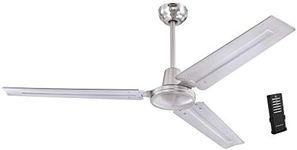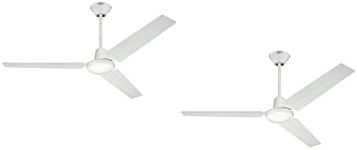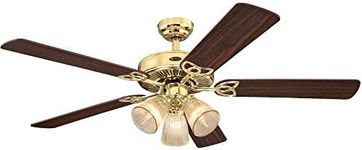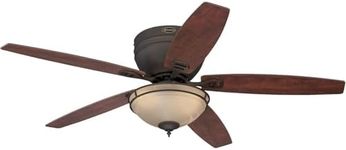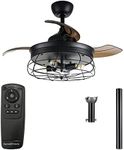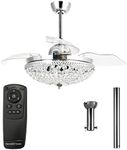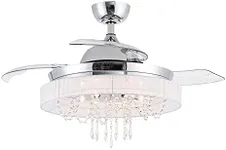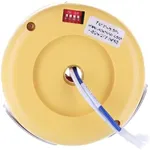Buying Guide for the Best Westinghouse Ceiling Fans
Choosing the right ceiling fan can significantly enhance the comfort and aesthetics of your living space. When selecting a ceiling fan, it's important to consider various factors such as the size of the room, the fan's airflow efficiency, the design, and additional features that may suit your needs. Understanding the key specifications will help you make an informed decision and ensure that the fan you choose is the best fit for your home.Blade SizeBlade size, or blade span, refers to the diameter of the circle that the fan blades create when in motion. This spec is important because it determines the fan's ability to circulate air effectively in a given space. Blade sizes typically range from 29 inches to 60 inches or more. For small rooms up to 75 square feet, a blade size of 29-36 inches is suitable. Medium-sized rooms up to 350 square feet benefit from a 42-48 inch blade span, while large rooms over 350 square feet require a blade size of 52 inches or more. Choose a blade size that matches the dimensions of your room to ensure optimal airflow.
CFM (Cubic Feet per Minute)CFM measures the volume of air a fan moves per minute. This spec is crucial for understanding the fan's efficiency in cooling a room. Higher CFM values indicate better airflow. Fans with a CFM of 4,000-5,000 are suitable for small to medium rooms, while larger rooms may require a fan with a CFM of 5,000-6,000 or more. Consider your room size and how much airflow you need to stay comfortable when choosing a fan with the appropriate CFM rating.
Motor TypeThe motor type in a ceiling fan affects its performance, noise level, and energy efficiency. There are two main types: AC (Alternating Current) and DC (Direct Current) motors. AC motors are common and generally less expensive, but they can be noisier and less energy-efficient. DC motors are quieter, more energy-efficient, and offer more speed options, but they tend to be pricier. If you prioritize energy savings and quiet operation, a fan with a DC motor may be the best choice for you.
Mounting OptionsMounting options refer to how the fan is installed on the ceiling. This is important for ensuring the fan operates safely and effectively in your space. There are three main types: flush mount, downrod mount, and angled mount. Flush mount fans are ideal for low ceilings (less than 8 feet), downrod mounts are suitable for standard to high ceilings (8 feet or higher), and angled mounts are designed for sloped ceilings. Choose the mounting option that matches your ceiling height and type to ensure proper installation and performance.
Control OptionsControl options determine how you operate the fan. This can include pull chains, wall controls, and remote controls. Pull chains are basic and require manual operation, making them suitable for smaller rooms or areas where convenience is not a priority. Wall controls offer more convenience and are ideal for larger rooms or spaces where the fan is used frequently. Remote controls provide the highest level of convenience, allowing you to adjust settings from anywhere in the room. Consider your preference for convenience and ease of use when selecting control options.
Design and AestheticsThe design and aesthetics of a ceiling fan can complement or enhance the decor of your room. This includes the fan's finish, blade material, and overall style. Fans come in various finishes such as brushed nickel, bronze, and white, and blade materials like wood, plastic, or metal. Choose a design that matches your room's decor and personal style. Additionally, consider whether you want a fan with integrated lighting, which can add both functionality and visual appeal to your space.
Energy EfficiencyEnergy efficiency is an important consideration for reducing electricity consumption and lowering utility bills. Look for fans with the ENERGY STAR label, which indicates they meet strict energy efficiency guidelines set by the U.S. Environmental Protection Agency. Energy-efficient fans use advanced motors and blade designs to move air more effectively while using less power. If you are environmentally conscious or want to save on energy costs, choosing an energy-efficient fan is a smart decision.

